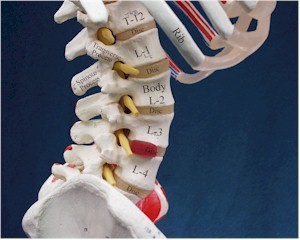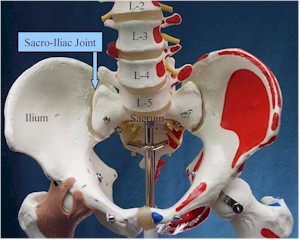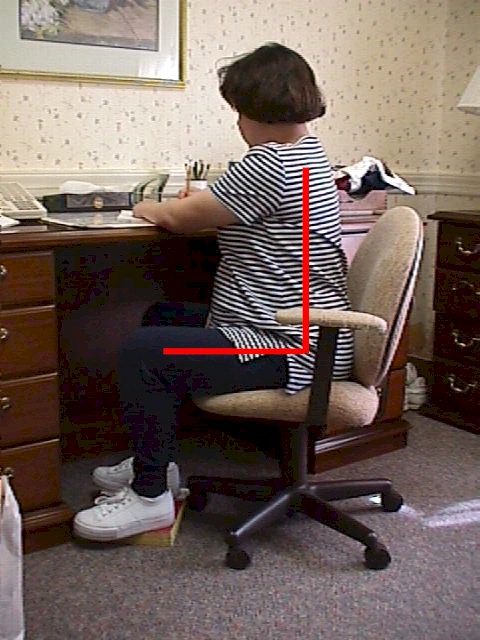|
Sciatica occurs in 30% of pregnant women and is characterized by sharp
pains in the hip and buttock on one or both sides, shooting down the back of
the thigh. There may also be numbness of the anterior thigh on the effected
side.
The sciatic nerve (tibial and common peroneal nerve bound together) arises
from nerve roots exiting the spine between L4 and S3. Any compression of these
nerve roots can lead to these symptoms.
Sciatica can occur at any time, but pregnancy predisposes towards it:
-
Pregnancy causes an accentuated lordosis of the spine.
-
Pregnancy causes weight gain
-
Pregnancy softens the cartilage of the sacro-iliac joint, de-stabilizing
the pelvic architecture and increasing the likelihood of stretching or
compression of the nerves within the pelvis.
 Treatment of sciatica: Treatment of sciatica:
-
Avoid standing for long periods of time.
-
When sleeping, assume a semi-fetal position, with both knees drawn up
and a pillow placed between the knees.
-
When sitting, make sure the knees are slightly flexed so that the knees
are at least level with the hips or slightly higher than the hips.
Sleeping with one leg straight and the other knee drawn up is a bad
position as far as the back is concerned. Torsion is placed on the lower
spine, aggravating any pressure on the sciatic nerve that may be
present.
Sleeping on the side while pregnant is a good, idea, but both
knees should be drawn up (flexing the thighs). Either side will work
well.
In order to maintain this semi-fetal position comfortably, it is
necessary to place a small pillow, folded blanket or towel between the
patient's knees. This will absorb moisture, separate the legs,
minimizing skin-to-skin contact, and provide additional support to the
legs. With practice, this position will become very comfortable.
When sitting at a desk, posture is very important.
These pictures illustrates two problems:
-
The chair is too high, resulting in her knees being lower than her
hips.
-
She is not sitting straight toward the desk. This position places
torsion on the lower back, aggravating her sciatica problem.
The lower picture has corrected one of the two problems.
-
She has lowered her chair and put a Chicago phone book underneath
her feet, elevating them. This results in her knees being level with
her hips, rocking her pelvis backwards and straightening out the lower
spine. This will ease pressure on the sciatic nerve.
-
She has not turned to face the desk squarely. That would have
solved the second problem.
|

Lumbar Spine

Sacroiliac joint

Good sleeping position. Both knees are
drawn up with a soft, absorbent blanket between the legs.

Bad sitting posture. The knees are lower than the pelvis.

Better sitting posture. The knees are
level with the pelvis. |
|